Premium Only Content
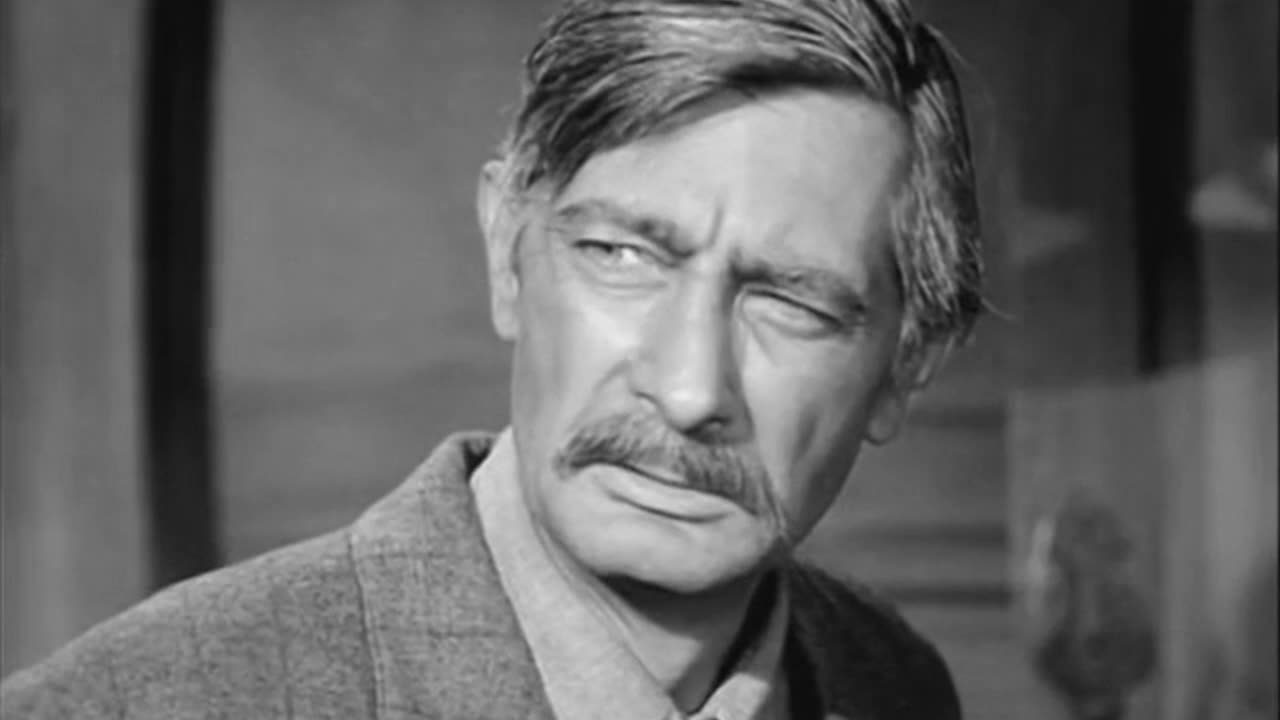
TATE - Home Town S01E01
Tate is an American Western television series starring David McLean that aired on NBC from June 8 until September 14, 1960.[1][2] It was created by Harry Julian Fink (the creator of Dirty Harry and T.H.E. Cat), who wrote most of the scripts, and produced by Perry Como's Roncom Video Films, Inc., as a summer replacement for The Perry Como Show. Richard Whorf guest-starred once on the series and directed the majority of the episodes. Ida Lupino directed two segments.
Overview
David McLean starred as Tate, who lost the use of his left arm during the American Civil War. Because he was injured at the Battle of Vicksburg in Mississippi, Tate's arm is covered in black leather and a glove and supported by a sling. Tate is a widower, but the cause of the death of his wife, Mary, is not specified in the series, although a gunfight seems likely. Tate had left his hometown as a teenager because of such a fight. At the urging of Marshal Morty Taw, whom viewers meet in the pilot episode, "Home Town", Tate arrives to help Taw hang an old childhood friend, played by James Coburn, who has murdered four people.
Tate roams the Old West as a bounty hunter-gunfighter. True to the nature of most hired guns on television Western series, Tate was discriminating as to for whom he worked, and would change sides if he found himself misled by his employers. As a gunman, he is wickedly fast on the draw. He also carries a shotgun, in his words, "to help even the odds." His reputation precedes him, and other men often seek him out in a gunfight...often to their regret. The fact that Tate is physically disabled made him the first handicapped lead character in television history, and paved the way for future programs Ironside with Raymond Burr and Longstreet, starring James Franciscus.
Background and production
Some references cite that Tate was recorded on videotape; at the time, most nonlive programs were shot on film. In fact, the series was filmed, as evidenced by quality of DVD copies of episodes. The misconception seems to come from the name of Como's production company; in this case, the "Video" in Roncom Video Films, Inc. meant they made films for television.
Sponsored by Kraft Foods, Tate was a summer replacement show, filling in for the second half-hour of Perry Como's Kraft Music Hall as part of the Kraft Summer Theater. Airing after the sitcom Happy, with Ronnie Burns, Tate did not develop the popularity in its short run to be extended thereafter as a regular series.
At the time, McLean was already well known as the Marlboro Man, one of the more famous spots in advertising history. McLean died in 1995 of lung cancer, brought on by many years of smoking.
On October 30, 2007, the entire run of 13 episodes was released in a Region One, three-DVD set by Timeless Media Group. Most of the series is in the public domain.
Guest stars
Robert Redford was cast in two episodes some six weeks apart, as John Torsett in "The Bounty Hunter" and as Tad Dundee in "Comanche Scalps", the latter segment with Leonard Nimoy as the Comanche and veteran character actor Lane Bradford as William Essey.
Others cast on Tate were:
Julie Adams
Chris Alcaide
Patricia Breslin
James Coburn
Robert Culp
Royal Dano
Ted de Corsia
Louise Fletcher
Peggy Ann Garner
Jock Gaynor
Marianna Hill
Martin Landau
Mort Mills
Warren Oates
Paul Richards
Bing Russell
Robert F. Simon
Vaughn Taylor
Warren Vanders
Peter Whitney
Don Wilbanks
Episode list
No. Title Original air date
1 "Home Town" June 8, 1960
Tate returns to his hometown to help the local sheriff out of difficulty. Guest stars were James Coburn and Royal Dano.
2 "Stopover" June 15, 1960
After Tate wins a gunfight with a man considered to be the fastest around, a braggart challenges Tate to a duel.
3 "The Bounty Hunter" June 22, 1960
A bounty hunter (Robert Culp) is searching for Tate for a murder that he did not commit. This episode also features a young Robert Redford, and actress Louise Fletcher, known for her role as Kai Winn Adami in Star Trek: Deep Space Nine.
4 "The Mary Hardin Story" June 29, 1960
A widow engages Tate's services to protect her son and herself from a pair of greedy land grabbers.
5 "Voices of the Town" July 6, 1960
In the midst of trying to capture a criminal, Tate is forced to shoot the criminal's wife, which results in the couple's neighbors seeking revenge.
6 "A Lethal Pride" July 20, 1960
Tate is hired by a Mexican national to avenge an assault on his daughter, (played by Marianna Hill, best known for the Star Trek episode, "Dagger of the Mind"), but a death occurs before justice is served.
7 "Tigrero" August 3, 1960
Tate is shot in the leg while transporting a killer, John Chess (played by Martin Landau), through a cattle town. A powerful cattle baron's brother is killed, and he hunts Tate and Chess in retaliation.
8 "Comanche Scalps" August 10, 1960
Tate attempts to convince a man not to kill his brother, but is thwarted by an Indian raiding party.
9 "Before Sunup" August 17, 1960
While trying to protect a man, Tate finds himself involved in a blazing gunfight.
10 "The Reckoning" August 24, 1960
Hired to serve justice on a killer, Tate finds a rejected suitor has set off a chain reaction of death and bitterness.
11 "The Gunfighters" August 31, 1960
Tate is hired by farmers to collect their back pay, and is at the mercy of a hired gunslinger.
12 "Quiet After the Storm" September 7, 1960
In the midst of bringing a killer to justice, Tate must fend off an angry lynch mob.
13 "The Return of Jessica Jackson" September 14, 1960
Tate helps rescue a woman who has been held by Indians for the past eight years.
https://en.wikipedia.org/wiki/The_Church_of_Jesus_Christ_of_Latter-day_Saints_and_the_Kingdom_of_God
The Church of Jesus Christ of Latter-day Saints and the Kingdom of God
From Wikipedia, the free encyclopedia
The Church of Jesus Christ of Latter-day Saints and the Kingdom of God[1] is a Mormon fundamentalist church in the Latter Day Saint movement. The sect was founded by Frank Naylor and Ivan Nielsen, who split from the Centennial Park group, another fundamentalist church over issues with another prominent polygamous family. The church is estimated to have 200–300 members,[2] most of whom reside in the Salt Lake Valley. The group is also known as the Neilsen Naylor Group.
The church holds weekly meetings alternating between Malad, Idaho and the Church-house in Bluffdale, Utah.
Polygamist roots
The Church of Jesus Christ of Latter-day Saints and the Kingdom of God's claims of authority are based around the accounts of John Wickersham Woolley, Lorin Calvin Woolley, and others of a meeting in September 1886 between LDS Church President John Taylor, the Woolleys, and others.[2] Prior to the meeting, Taylor is said to have met with Jesus Christ and the deceased church founder Joseph Smith, and to have received a revelation commanding that plural marriage should not cease, but be kept alive by a group separate from the LDS Church. The following day, the Woolleys, as well as Taylor's counselor George Q. Cannon, and others, were said to have been set apart to keep "the principle" alive.
Split from the Centennial Park group
The Centennial Park group is a polygamist sect based in the Arizona Strip. This group is itself a split from the Fundamentalist Church of Jesus Christ of Latter-Day Saints (FLDS Church). The Centennial Park group refers to itself as the "Second Ward" and refers to the FLDS Church as the "First Ward". When Alma A. Timpson became leader of the Second Ward in 1988, he appointed Frank Naylor as apostle and Ivan Nielsen as high priest and later as bishop. Naylor and Nielsen disagreed with Timpson's leadership and they split from the Second Ward in 1990[3] with Naylor as leader.
Much of the rivalry was based between interactions between Timpson's sons and Neilsen and Naylor's families.
The new church
Naylor and Nielsen were able to gather a number of followers from both the Centennial Park group and the FLDS Church.[4] Most of the members of the new group migrated north to the Salt Lake Valley in Utah where they have built a meeting house.[4] They continue to practice polygamy as well as other fundamentalist doctrines such as the Adam–God doctrine.[2] The church has also formed a close relationship[5] with the Church of Jesus Christ (Original Doctrine) Inc.,[6] an FLDS Church-offshoot based in Bountiful, British Columbia.
Endowment House:
In 2008, they began offering an Endowment ritual. After careful consideration among the presidency, one of the homes owned by their leaders was renovated for use in giving Endowments.
See also
Factional breakdown: Mormon fundamentalist sects
List of fundamentalist sects in the Latter Day Saint movement
Big Love HBO series about a fictional independent polygamous Mormon fundamentalist family
References
"Church of Jesus Christ of Latter-day Saints and the Kingdom of God, The". utah.gov. Utah Division of Corporations and commercial Code: Business Search. Archived from the original on November 29, 2014. Retrieved 18 November 2014.
Utah Attorney General’s Office and Arizona Attorney General's Office. The Primer, Helping Victims of Domestic Violence and Child Abuse in Polygamous Communities Archived 2013-01-27 at the Wayback Machine. Updated June 2006. Page 21.
"A Chronology of Modern Polygamy". Polygamy: The Mormon Enigma. WindRiver Publishing, Inc. 2008. Retrieved June 4, 2010.
Hales, Brian C (2009). "The Naylor Group (Salt Lake County)". mormonfundamentalism.com. Archived from the original on October 8, 2009. Retrieved June 4, 2010.
Adams, Brooke; Nate Carlisle (January 8, 2009). "Arrested: Leaders of FLDS-linked Canadian polygamous sect". The Salt Lake Tribune. Bountiful, British Columbia: MediaNews Group. Retrieved June 4, 2010.
"LDS Church wins, Canadian polygamist loses in fight for 'Mormon' name". Salt Lake Tribune. 14 January 2015. Retrieved 19 January 2015. Finally giving up the fight, Blackmore has agreed to change his group's corporate name to the "Church of Jesus Christ (Original Doctrine) Inc.
Further reading
Hales, Brian C. (2007). Modern Polygamy and Mormon Fundamentalism: The Generations After the Manifesto(Salt Lake City, Utah: Greg Kofford Books).
Quinn, D. Michael "Plural Marriage and Mormon Fundamentalism", Dialogue: A Journal of Mormon Thought 31(2) (Summer 1998).
"The Primer" - Helping Victims of Domestic Violence and Child Abuse in Polygamous Communities. A joint report from the offices of the Attorneys General of Arizona and Utah.
Van Wagoner, Richard S. (1999). Mormon Polygamy: A History. UK: Prometheus Books. ISBN 0-941214-79-6.
-
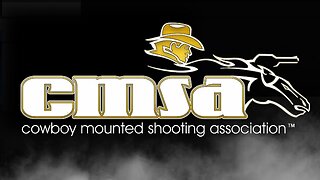 2:11:55
2:11:55
Total Horse Channel
13 hours ago2025 CMSA Extravaganza | Mounted Shooting
20.9K1 -
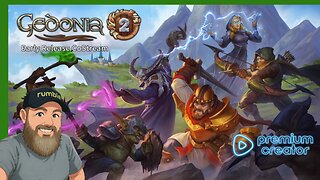 LIVE
LIVE
VapinGamers
3 hours ago $0.08 earnedGedonia 2 - Early Release Preview and Co-Stream! - !game #Sponsored
192 watching -
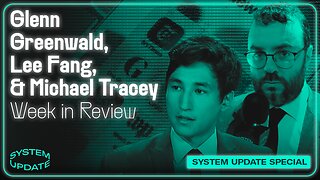 1:32:39
1:32:39
Glenn Greenwald
9 hours agoWeek in Review: Douglas Murray VS Dave Smith Debate, Tariffs, and More with Glenn Greenwald, Lee Fang, & Michael Tracey | SYSTEM UPDATE #438
110K42 -
 LIVE
LIVE
EnDuEnDo
2 hours ago🚨Vairety Stream 🎮 Push to 500 Followers 🚀 Chill Vibes 😎
74 watching -
 4:25:53
4:25:53
Nerdrotic
9 hours ago $4.10 earnedMarvel Is SCREWED | Daredevil Afterbirth | G20 is ABSOLUTE Cinema - Friday Night Tights 349 w MauLer
126K26 -
 56:03
56:03
BonginoReport
8 hours agoICE Boss Wants Deportations To Run like Amazon Prime - Nightly Scroll w/Hayley Caronia (Ep.25)
128K73 -
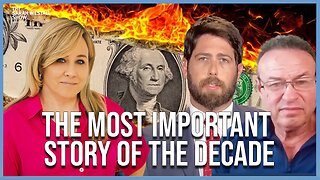 45:12
45:12
Sarah Westall
5 hours ago“Most Important Story of the Decade” Globalists Move to Fund World Gov w/ Alex Newman & Sam Anthony
51.9K12 -
 16:23
16:23
China Uncensored
6 hours agoChina STRIKES BACK Against Trump Tariffs
31.2K5 -
 13:52
13:52
Tundra Tactical
6 hours ago $0.14 earnedDOJ's 2A Task Force: Too Little Too Late?
24.4K3 -
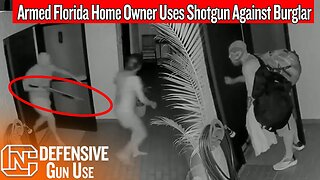 8:32
8:32
Colion Noir
12 hours agoCaught on Camera: Armed Florida Home Owner Uses Shotgun Against Burglar
35.6K11